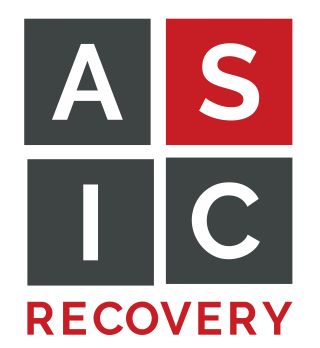Step 10 of Alcoholics Anonymous goes like this: “Continued to take personal inventory and when we were wrong promptly admitted it.”
This step can be broken up into two major parts—the more well-known nightly inventory, and the lesser-known spot-check inventory. Both these inventories are combinations of steps that have come before.
In Step 4, you wrote down a lot of inventory and looked closely at your resentments, your fears, and your behavior in relationships. In Step 10, you make a small inventory (ideally) every day.
In Step 5, you talked to someone (usually your sponsor) about your inventory. In Step 10, you speak to someone about what’s bothering you as part of the spot-check inventory.
In Steps 6 and 7, you made a list of your character defects and prayed to have them removed. In Step 10, you are paying close attention to your character defects to catch when they’re cropping up so that you can write inventory on them and discuss them with another person.
In Step 8 and Step 9, you made a list of people you’d harmed, and you then made amends to them where appropriate. In Step 10, you examine situations that arise out of your character defects, and then you make amends if you and the person you do your 10th step with decide it’s appropriate.
The idea behind step 10 AA is constant vigilance. It’s not about being perfect but about recognizing when you’ve gone “off the beam” and immediately taking steps to correct it.
The goal is to maintain your spiritual growth, which you’ve worked so hard to achieve in the first nine steps.
Step 10 AA is a proactive step. You’re taking the initiative, stopping character defects in their tracks, and keeping yourself from falling into old patterns. This step is a constant reminder that recovery is a daily process, not a one-time event.
The 10th Step Nightly Inventory
The nightly inventory is the most well-known part of the 10th Step. In fact, it’s so well known that many people are unaware that there’s a second part to the 10th step—the spot-check inventory.
The nightly inventory is a tool for self-reflection and self-improvement. It helps you identify any negative patterns in your behavior and take steps to correct them. It helps you to be proactive in addressing the spiritual poisons that can block you off from your higher power—resentment, selfishness, dishonesty, and fear.
It consists of these questions that you’re supposed to answer at night:
- Were we resentful?
- Were we selfish?
- Were we dishonest
- Were we afraid?
- Do we owe an apology?
- Have we kept something to ourselves which should be discussed with another person at once?
- Were we kind and loving toward all?
- What could we have done better?
- Were we thinking of ourselves most of the time?
- Or were we thinking of what we could do for others, of what we could pack into the stream of life?
While it’s technically called a nightly inventory, many people will do it at other times during the day that are more convenient for them. The goal should be to do one every 24 hours.
One drawback of the nightly inventory as it’s written is that it only addresses 4 character defects—resentment, selfishness, dishonesty, and fear. Most people have far more than those 4 character defects, so it’s better to focus your inventory on the character defects that are causing you the most trouble in addition to those 4.
Many people also send their nightly inventories to their sponsor or someone else in their 12-Step program to maintain accountability. That way, if you’ve got something on there that you need to talk to someone about, it’s harder to ignore.
Taking a Practical Approach to the Nightly Inventory
One of the biggest problems that most people run into when it comes to the nightly inventory is how to use it effectively, especially when you consider the fact that it’s a big ask.
It’s easy to think that daily introspection is simple and quick, but for the average person, life is very busy as it is, especially upon reentering the world from treatment. Time can often be very limited.
It’s very common for someone who is in treatment to have a full-time job, a family, and maybe children at home and a spouse.
Someone who wakes up at 6 am, takes the kids to school, works until 6 pm (or later if they have to leave in the middle of the work day to pick up the kids), and then eats dinner and tries to cram in a meeting while their spouse is getting the kids ready for bedtime at 7:30 pm isn’t exactly flush with free time.
Now throw in a call to your sponsor, a call to someone else in the program, and trying to get a decent amount of sleep, and the time to take care of a nightly inventory is suddenly very burdensome.
And this doesn’t even take into account the fact that many people are told in treatment that they need to take up a hobby or exercise regularly or meditate regularly. They’re often told these are high-priority items. Where does the nightly inventory fit in there? Especially if they’ve been told that one of their triggers is a lack of sleep!
This is not to say that you can just skip the nightly inventory. Rather, it’s an acknowledgement that, sometimes, you’re just not going to be able to get it done.
Many people will find ways of taking care of it while doing something else. For example, many people who work full-time will do it during their lunch break. Others will take care of it while waiting in the car line to pick up the kids.
If you’re at a meeting, there’s no shame in doing it at the beginning of the meeting when there’s a lot of repetitive reading and announcements taking place. You can also do it during the meeting if you’re really pressed for time.
And while this all sounds well and good, in reality, you’re still going to have days where you just forget, where you just don’t have time, or you just flat-out are too tired to care.
It’s okay to have these days! This just means you’re a human being. What matters isn’t that you do this every day. That’s just a goal. What matters is that, when you miss a day, you try to get back on track with your schedule.
Working a 12-Step program perfectly is impossible. This is directly addressed in the Big Book of Alcoholics Anonymous. They specifically say that this program is about progress, not perfection. Missing a day isn’t a big deal as long as you focus on moving forward and progressing the next day.
Many people who achieve long-term sobriety are not doing a nightly inventory every day, but some certainly are. It all depends on what you can realistically do. If you know that doing a nightly inventory every day is very important for you to stay sober, then focus on that.
However, if you know that doing it two or three times a week is sufficient, that’s okay too.
One final note on the nightly inventory: it’s easy to be way too hard on yourself during these inventories, especially if you struggle with low self-esteem or have a very vocal and cruel inner critic.
If this is the case for you, try to focus heavily on the good and positive things you did each day. Don’t worry so much about the negativity-focused questions that are in the inventory as it’s written.
In fact, it’s a good idea to go over those questions with your sponsor and modify the inventory in a way that’s going to be positive for you and help you to feel good about, and even look forward to, completing the inventory regularly.
The Spot-check Inventory
The spot-check inventory is another crucial part of step 10 AA that most people miss. While creating a nightly inventory is a great habit to get into, it’s equally important to take inventory immediately when a character defect crops up and is causing you problems in the moment.
The spot-check inventory serves as a real-time tool for self-awareness and self-improvement. It’s a 5-step process:
- Continue to watch for selfishness, dishonesty, resentment, and fear (and any other character defects)
- Ask your higher power to remove them
- Discuss them with someone immediately
- Make amends quickly if we’ve harmed anyone
- Turn our thoughts to someone we can help
The idea is to take action the moment you run into a character defect instead of letting it fester until your next nightly inventory.
Think of the nightly inventory as a catch-all for the end of the day, a time to reflect and see if there were character defects happening that you didn’t notice. After all, for most people, it’s very hard to even begin noticing when they’re acting a certain way—it takes time to even identify when a character defect is happening in the moment.
The spot-check inventory, on the other hand, is designed to be used at the moment the character defect is happening—the nightly inventory is for the leftovers.
For example, if you get angry at a coworker, you would ideally step away for a moment to call your sponsor or someone else in your 12-Step program to talk through the situation. Then you could immediately make amends if you said or did something out of anger that you regretted.
That way, you can take care of the issue right away and not let it snowball into a huge resentment.
This requires a form of mindfulness because you need to learn how to be constantly aware of yourself, your actions, and how they’re affecting other people. However, once implemented over time, you’ll find that your character defects gradually diminish.
This is critical for long-term sobriety for a few reasons.
The Importance of Step 10 for Long-term Recovery
Step 10 of alcoholics anonymous is pivotal for lasting recovery. It helps you maintain the progress you’ve made and prevent any relapses. It’s about continuous self-examination and personal growth. It’s through this process that you come to realize that recovery is not a destination, but a journey.
Think of Step 10 as your main weapon against character defects, and think of character defects as one of the major drivers of relapse—because they are.
When people relapse, it’s rarely out of the blue. It’s often the result of stewing in anger for days or weeks; of character defects like thrill seeking, gambling, stealing, or lying still happening despite being sober; of jealousy or bitterness over a relationship that’s not being addressed.
Without Step 10 to address these character defects (these emotions and ways of acting out), you end up engaging in the same old behaviors that often caused you to use or drink in the first place.
Step 10 also helps acknowledge your wrongs and take responsibility for your actions so that you don’t end up with a ton of amends to make. It teaches you to be patient with yourself, to recognize your progress, and to continuously strive for improvement.
Step 10 of Alcoholics Anonymous Is Your Key to Lasting Recovery
Step 10 of Alcoholics Anonymous is a key to lasting recovery. Most people who achieve long-term sobriety in a 12-Step program are regularly taking Step 10. It’s the best way to make gradual, long-term changes that change behaviors for the better.
If you’re going through the 12 Steps and are thinking about getting into a sober living or IOP program to augment your recovery, we can help.
At ASIC Recovery, our Intensive Outpatient Program (IOP) is dedicated to helping you develop healthier coping skills and build a supportive recovery network so that you can achieve long-term sobriety.



